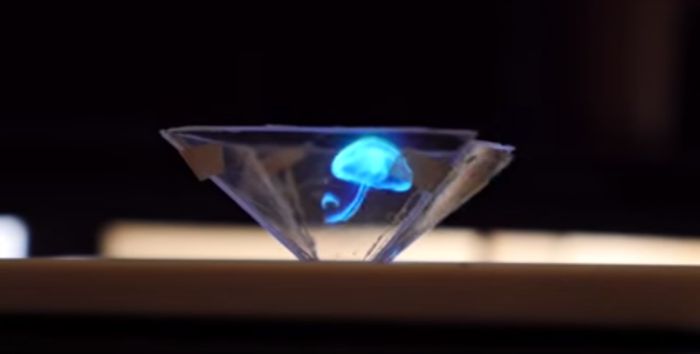

Pretty much everyone has a smartphone nowadays. And you may not know it, because we so often take them for granted, but that small device that you carry around in your backpocket is an extremely complicated piece of technology. Not only does it allow you to communicate with individuals around the globe, it is a flashlight, gaming device, and map system all-in-one (and honestly, that’s just the start of the list).
Most of us really don’t know how it works, and we only understand half of the applications that it comes with. But there are some pretty awesome low-tech things that you can do with your phone—like making a video that looks like a 3d hologram. It sounds complex, but in fact, even the least tech-savvy person could figure this out. And best of all, you can make this using material that most of us have lying about the house.
The handy video tutorial comes thanks to YouTuber MrWhoseTheBoss (I am guessing that he’s the boss?).
The video tells you that you can turn your phone into a 3d hologram. However, this isn’t precisely true. You see, true holograms deal with lasers and reconstructed wavefronts. As Paul King, software technologist, notes:
A hologram records information about light passing through a 2D region rather than light focused onto a 2D region (as in photographs).
A hologram works in the same way as a photograph, in that both involve capturing an image onto a 2D image plate or film…a hologram captures a representation of the light passing through the imaging plate on its way to the viewer. (the light doesn’t actually pass through during photography, but that is a detail.) The hologram captures the light before it is focused, and thus contains information about the light from many points of view. The way this information is captured involves the magic of light wave interference patterns using lasers. The light wave interference pattern is recorded by the silver halide crystals.
But although the principles are a little different, the image that you can make with this looks remarkably like a hologram. If you want more information about holograms and how they work, just head here.
Please note, in order to work effectively, you need to make the pyramid 36 cm wide at the bottom and 1 cm at the top and 3.5 cm high. Otherwise, you will have a little problem getting the structure to stay together. That said, feel free to try other dimensions and see how it goes, but if it won’t stay together, that’s likely why.
What you’ll need:
- Ruler
- Paper
- Pen
- Old cd case
- Box cutter (adult supervision might be a good idea here)
- Scissors
- Tape
- Access to a video made for this purpose, like this one, which you can find on YouTube
- And a phone (of course)